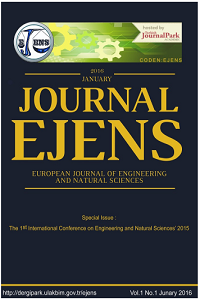Metaheuristic based optimization of tuned mass dampers on single degree of freedom structures subjected to near fault vibrations
Metaheuristic based optimization of tuned mass dampers on single degree of freedom structures subjected to near fault vibrations
___
- [1]. Makris, N., (1997). Rigidity-Plasticity-Viscosity: Can Electrorheological Dampers Protect Base-Isolated Structures From Near-Source Ground Motions? Earthquake Engineering and Structural Dynamics, 26, 571-591.
- [2]. Den Hartog, J. P., (1947). Mechanical Vibrations. McGraw-Hill, New York.
- [3]. Warburton, G.B., (1982). Optimum absorber parameters for various combinations of response and excitation parameters. Earthquake Engineering and Structural Dynamics, 10, 381–401.
- [4]. Sadek, F., Mohraz, B., Taylor, A.W., Chung, R.M., (1997). A Method of Estimating The Parameters of Tuned Mass Dampers for Seismic Applications. Earthquake Engineering and Structural Dynamics, 26, 617–635.
- [5]. Bekdaş, G., Nigdeli, S.M., (2011). Estimating Optimum Parameters of Tuned Mass Dampers using Harmony Search. Engineering Structures, 33, 2716-2723.
- [6]. Hadi, M.N.S., Arfiadi, Y., (1998). Optimum Design of Absorber for MDOF Structures. Journal of Structural Engineering-ASCE, 124, 1272–1280.
- [7]. Bekdaş, G., & Nigdeli, S. M., (2017). Metaheuristic Based Optimization of Tuned Mass Dampers Under Earthquake Excitation by Considering Soil-structure Interaction. Soil Dynamics and Earthquake Engineering, 92, 443-461.
- [8]. Bekdaş G, Nigdeli SM, Yang X-S, Metaheuristic Based Optimization for Tuned Mass Dampers Using Frequency Domain Responses. In: Harmony Search Algorithm. Advances in Intelligent Systems and Computing, vol 514, Del Ser J. (eds) Springer, pp. 271-279, 2017.
- [9]. Geem, Z. W., Kim, J. H., & Loganathan, G. V. (2001). A new heuristic optimization algorithm: harmony search. Simulation, 76(2), 60-68.
- [10]. Yang, X. S., (2012). Flower Pollination Algorithm for Global Optimization. International Conference on Unconventional Computing and Natural Computation (pp. 240-249), Springer Berlin Heidelberg.
- [11]. Rao, R. V., Savsani, V. J., & Vakharia, D. P., (2011). Teaching–learning-Based Optimization: A Novel Method for Constrained Mechanical Design Optimization Problems. Computer-Aided Design, 43(3), 303-315.
- Başlangıç: 2015
- Yayıncı: CNR Çevre
Macro and Micro Modeling of the Unreinforced Masonry Shear Walls
Sedat Komurcu, Abdullah Gedikli
Numerical Investigation of Hot Ultrasonic Assisted Turning of Titanium Alloy
Shape Features Based Conic Arcs for Unclassified Wheat Identification
Kemal ÖZKAN, Ahmet Okan ONARCAN, Erol SEKE, Murat OLGUN
A Useful Way to Dispose of Phenolic-rich Agro-industrial Wastes: Mushroom Cultivation
Solar Radiation Modeling with Adaptive Approach
Emre Akarslan, Fatih Onur Hocaoglu
Characteristics of Some Turkish Lignites and Potential of Using in Agricultural Sector
Ali Serkan SOYDAN, Arzu YAVAŞ, Osman Ozan AVİNÇ, Gizem Karakan GÜNAYDIN, M. Niyazi KIVILCIM, Mehmet DEMİRTAŞ, Sema Palamutcu
Toygun Dağdevir, Orhan Keklikcioglu, Veysel Ozceyhan
The effect of the consideration of slab dimensions on optimum design of reinforced concrete beams
